Top 10 Dark Secrets of the Vatican
Okay, let me make this clear: I don't want to offend any Catholics by making this list! The idea has nothing to do with Catholicism, as opposed to a topic that is outside of the United States. Consider it a distant cousin to my "Top 10 Weirdest Secrets of the United States Government" list. Understood? That's good. Now enjoy.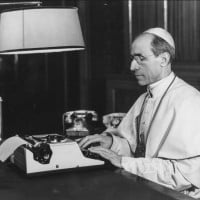
Yeah, not only did the Vatican pave the road out of Europe for thousands of Nazis, but the Vatican was also helped smuggle various items that were property of Jewish families. The financial advisor of the Vatican, at the time, Bernardino Nogara, is thought to have possibly been a Nazi spy. He supposedly had incorporated an agenda that is a purely evil plan that enabled the Vatican to invest its money in Italian certain insurance companies that kept assets from life insurance plans of many Jewish families whom were almost all annihilated. Given the Vatican invested and was not a direct source insurance, they didn't need to return any of the money they got from the life insurance plans of hundreds of thousands of dead Jews, by using this plan. Considering how the Vatican was at the time, a nation within a nation which was a primary axis power during the holocaust- we're talking about Italy, of course- this shouldn't be as baffling as it is, but if this isn't a dark secret, I don't know what is. The involvement the Vatican had in World War II is more than you think.
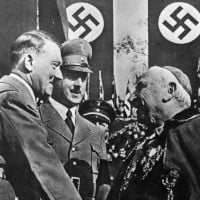
In all honesty, given the relationship between Hitler and Mussolini, you should not be surprised. After World War II started coming to its end, the Nazis were going to be charged with mass genocide, they mostly went to seek refuge in South America. Thousands of Nazis escaped their ill fates by hiding in mostly Argentina, Chile, and Brazil. However, the travel documents used to get the Nazis into South America indicate the Vatican helped the Nazis travel to these countries. There is in argument that this was done because the Vatican wanted to revive European Christianity or that the Vatican was afraid of the increasing amount of influence the Soviet Union had on the rest of Europe. The Vatican refuses to confirm or deny these claims. But I don't. I think this had nothing to do with Christianity or the Soviet Union. I say it's simply corrupt intervention because the guy who ran the rest of Italy (notably not the Pope) was chums with Hitler, and the Pope wanted to be in Mussolini's good side. Take that with a grain of salt, though.
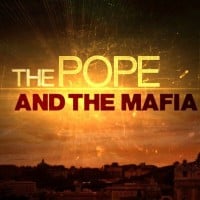
In the third installment of the Godfather movies, a corrupt deal between the Mafia and the Vatican eventually got the pope killed. While we don't exactly have enough to make this a fact, it's possible that that was not from the director's imagination. On September 29, 1978, Pope John Paul I was sitting up in his bed, but he was a corpse.
John Paul I had been the pope only for a bit more than a month. Very similar to the likes of the president of the United States, William Henry Harrison. Vatican officials say that the John Paul I died of a heart attack, but there was never an autopsy of his body, to prove this, and when he died, the Vatican had undisputable ties to organized crime, including the American Mafia. As if to put an emphasis on that, in 1982, the president of the Vatican Bank, Father Paul Marcinkus resigned from his position after a trail of scams and scandals showed that the Vatican Bank had strong ties to the Mafia. After some time, the Vatican Bank had to refund more than $200 million in American dollars, to creditors. Father Paul Marcinkus was never charged of a crime, but he has been suspected of playing a hand in lots of sudden deaths. Even Pope John Paul I's.
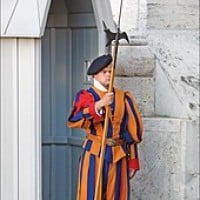
This might seem like a weird inclusion, especially considering how weird is not the theme of this list, but hear me out. While in present day, Switzerland has a reputation of being a pacifist nation, back in the 1500s, they were a force to be reckoned with, along the lines of what the United States is today. Unstoppable in the right hands. Swiss armies were famous for mastering a lethal weapon called the "halberd", which is kind of what you would get if you combined a spear and an axe. Their ground troops were equally known for destroying armies of foes, while riding on horseback. Once Pope Julius II had seen their fierce military capability in battle five centuries ago, he recruited a handful of soldiers as his bodyguards. And to this day, Swiss Guards have been loyal bodyguards of the pope, and from time to time sacrificed their lives for the pope. I guess when you want to be protected from those who want you dead, you work with what you know has been a success. Even if what works is not Italian.
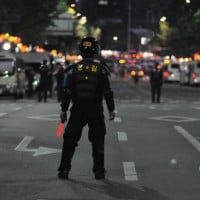
This is actually not as bad as it sounds. It's not that all the citizens exercise their sin nature more than they let on. I don't think it's even anything involving the Mafia, in present day. The Vatican is a tiny nation, with a population under one thousand, and it gets flooded with tourists for obvious reasons, and as a result of these giant crowds of tourists, it's really easy for the citizens to get away with misdemeanors. And to top it off, the Vatican needs some serious prison reform, as there are no working prison systems, and the Vatican has one judge. As a result of those two factors, usually the felons are just guided into Italy, which is part of a deal the two nations have. But the crimes that the Vatican is capable of dealing with on their own, which are mainly petty matters like shoplifting, are usually punished with a temporary restraining order, so the shoplifter can't access the area where they committed the crime. But not every the Vatican can handle is theft. The Vatican can also handle drug problems, and issued their first drug conviction in 2007.

At this point, are you even remotely surprised? A document, dating back to 1946 suggests that the Vatican may have smuggled Nazi gold during World War II, even though the Vatican was a neutral force. This document was first shown to the general public in 1997, and it claimed the Vatican bank obtained 200 million francs, which is roughly $254 million in present day, and that the Vatican was sending all that money to Nazis. That money was put through this thing referred to as the "Vatican pipeline" which goes to Argentina and Spain, where it was sent to Nazis who left Germany to escape punishment for war crimes.
The Vatican bank also sent money that was stolen from Serbs and murdered Jews, through Utashe, a Nazi puppet nation in Croatia. Towards the end of World War II, the Utashe started stealing from the victims of their ethnic cleansings, and then sent about 350 million Swiss francs, which is hundreds of millions in American dollars, out of Yugoslavia to go through the Vatican. This money wasn't sent to Nazis escaping war crimes, though. It was used to fund the Ustashe organization while they were a government in exile, which is quite close to funding Nazi Germany in and of itself.
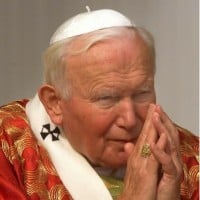
With scientific advancements, it's hard to believe that exorcisms, these rituals that rid people or places of demons, are still practiced. But contrary to a popular belief that they were done up until the Middle Ages, there are still a few hundred exorcists on earth and there are four working in Rome, or the Vatican, collectively. While they're usually left for priests to perform, two relatively recent Popes have done exorcisms in the Vatican.
The first one was conducted by Pope John Paul II in March of 1982, Francesca Fabrizi, a young Italian woman. During the exorcism, she thrashed and wailed, much like someone possessed by a demon. Her cure was when the Pope said he would say mass for her, the next day. Afterwards, she lived a very normal life, getting married and having kids. Pope John Paul did another exorcism in September of 2000, with very similar circumstances, although he failed, and the woman he performed on had to have a follow-up exorcism on her, performed by Father Amorth, the next day.
Then second Pope to have done an exorcism, Pope Benedict XVI, performed it on May. The people getting performed on were two men who were howling in the Pope's weekly audience. Supposedly, their demons left them when Pope Benedict blessed the men, and they flew nine feet back, and were as good as new. While it's questionable whether these exorcisms truly had these effects or not, there is no denying they happened.
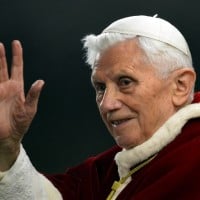
In some ways, such as longevity of a term, being the Pope is usually not that different from being a Supreme Court justice in the USA. But, just like every other profession, there are a couple of exceptions. Popes are allowed to retire, but it's not exactly something Catholics look at kindly. It goes against Catholic values, so it's rare for a Pope to resign. In the past millennium, there have been 123 Popes, and out of them, only five have resigned or retired, making the odds of a Pope resigning at 4.07%.
The first pope to resign was Pope Benedict IX, who was one of the youngest Popes, and was perhaps twenty when he became pope. He is the only person to have served multiple terms as Pope, as well. He was forced out of the Papacy (which is just the way the say he was no longer the Pope) in 1036, but he became Pope again, a few months afterwards. However, he had a certain endeavor that was problematic. He wanted to get married, which goes against the Catholic rules for Popes. In the end, he sold the Papacy the pope who came after him, Pope Gregory VI. Unfortunately, Benedict regretted stepping down, as the woman he wanted to marry didn't want to marry him. After he sorted out his mistake, he eventually became Pope, once again in November 1047. Pope Gregory VI, who stepped down at the urging of the Bishops. He denied he did anything wrong, but resigned nevertheless in 1046. After him, there was a pretty steady 200 years between further resignations. Pope Celestine V resigned in 1294, Pope Gregory XII in 1415, and the final Pope to resign broke that theme by roughly 600 years. The final Pope to resign was Pope Benedict XVI in 2013, although there are a few people who believe he was forced out.

The Vatican's secret archives are not purely unknown, due to Pope Leo XIII letting scholars visit the Vatican in 1881. In present day, the archives are even more accessible than then. Tourists are allowed to view the discussions between every pope for the past in the past millennium, but like everything that sounds too good to be true, there's a clause. In order for them to do this, tourists must know precisely what they're looking for. Although there are about 52 miles worth of shelves in the Vatican archives, the librarians forbid browsing. The most famous existing letter to the Pope is perhaps King Henry VIII asking for his marriage to Catherine of Aragon would be viewed as invalid by the Pope, which Pope Clement VII said no to. The odd thing is that King Henry divorced her nonetheless and married a total of five women over the course of time, which caused Rome to separate from the Church of England.
The Vatican Bank was established during the start of World War II. 1942 to be exact, and the purpose behind this was to elude the restrictions that Allied forces had put on financial transactions. Italy was one of the powers fighting the allies and the allied troops didn't want the money to reach their enemies. Economic warfare, basically.
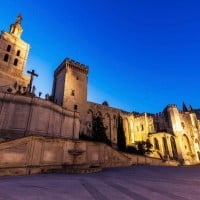
This is not too different from how not every President of the United States lived in the White House, during their presidency. Originally, the Pope lived in the the Lateran Palace, in Rome. They even left Rome completely in 1309. After King Philip IV got the ball rolling for a French cardinal to become the pope, the papal court migrated from Rome, Italy to Avignon, France. Seven french popes did their duties in Avignon, and the papacy did not return to Rome until 1377. But once the papacy returned to Rome, the Lateran Palace was destroyed. Burned to the ground. That's when the Vatican became the place where the pope resides, where the papal court is, and where Catholicism itself is at its finest, for almost 700 years.
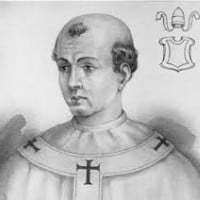
This happened in 897 AD when the body of Pope Formosus was unearthed and taken to a courtroom presided over by the then-current pope whose only intention was to find Pope Formosus guilty. If you're not familiar with the term "synod", it is an ecclesiastical council or gathering where decisions about issues related to faith or disciplinary matters are determined.
While trying a dead body would be beyond weird in Vatican City today, the Cadaver Synod took place during a time when political machinations ruled the papacy, long before 11th-century reforms that regulated papal elections.